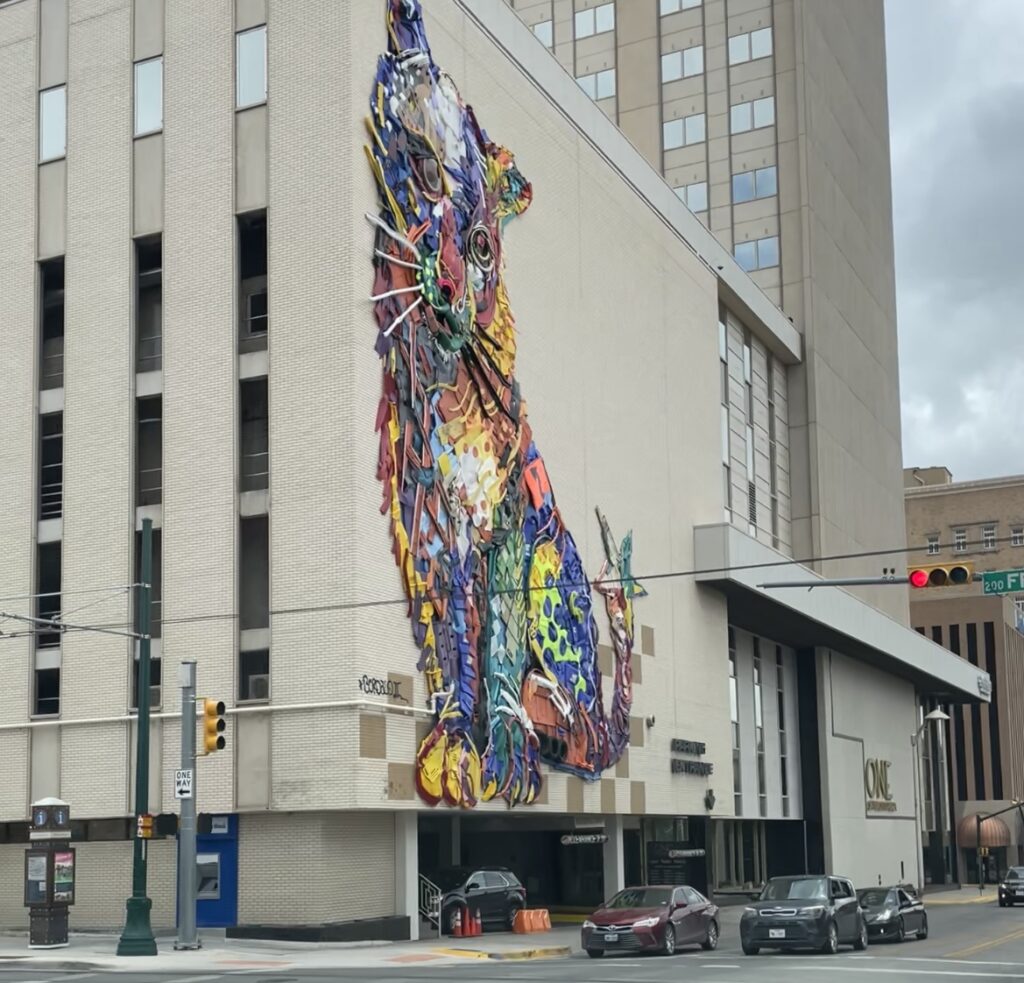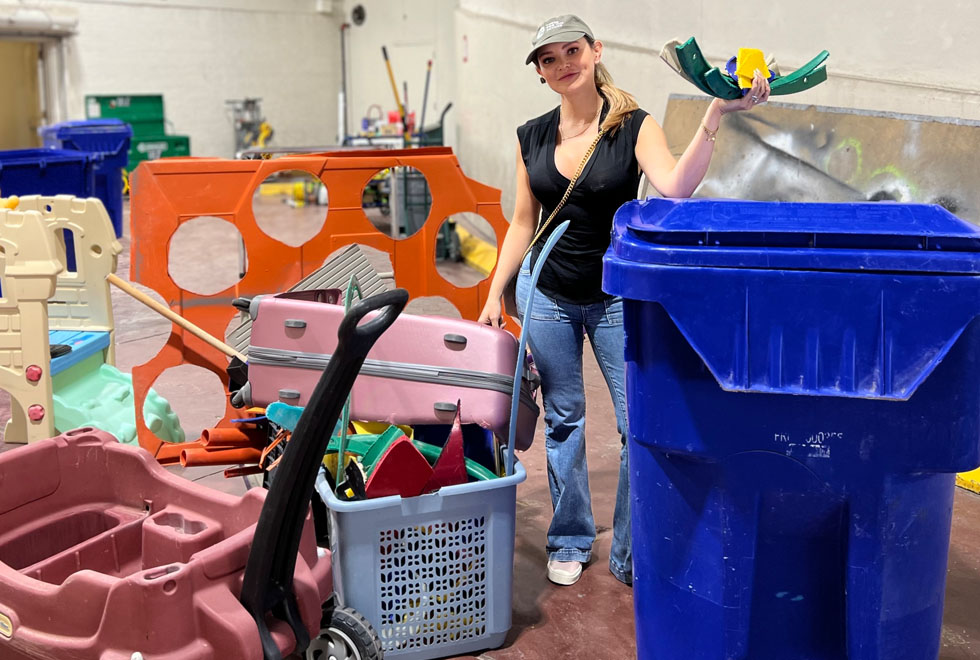
Plastic. It’s all around us. Most people know plastic is harmful to the environment. Lawmakers, scientists, and activists repeatedly drive this point home as plastic pollution remains a global concern contributing to climate change.
Now, more than ever, it’s critical to understand the statistics and problems that plastic pollution causes so we can be part of the solution.
Plastic Pollution Facts
The problem of plastic pollution is far worse than any of us would like to admit. According to the UN Environment Program (UNEP), 300 million tons of plastic are produced annually. Unfortunately, not all of it is recycled.
Nearly 75% of beach trash around the world is discarded plastic. Everything from bottle caps, food wrappers, and grocery bags to plastic filters from cigarette butts wash up on shores worldwide.
By some estimates, 2 million plastic bags are used, and 1 million plastic bottles are purchased every minute. That’s between 500 billion and 1 trillion plastic bags worldwide. Many countries and cities have banned, partially banned, or taxed single-use plastic bags.
DID YOU KNOW that only about 9% of all plastic is recycled, and about 12% is incinerated? The remaining plastic winds up in dumps, landfills, and the ocean.
Some countries have implemented plastic bans that strictly control production. Many retailers around the world are beginning to reduce the plastic they use. For example, Ikea created a plan to phase out single-use plastic in favor of more sustainable options.
Still, single-use plastic is at an all-time high globally. Countries with low recycling rates struggle to collect plastics for recycling. In 2019 the UN environmental assembly tried to pass a global ambition to phase out single-use plastics by 2025. Unfortunately, these resolutions did not pass.
Plastic Impacts Human and Animal Health
If the pollution from plastic isn’t bad enough, many studies reveal the harmful impacts of plastics on human and animal health.
Plastic pollution is toxic at every stage, from production and transportation to use and disposal. Communities near petrochemical and plastic factories face chemical pollution in the air, land, and water.
According to the Plastic Health Coalition, plastics may impact human health in three primary ways:
- As we eat, drink, and breathe microplastics daily, those particles enter our bodies and can cause harm.
- Plastics contain chemical additives connected to serious health conditions like hormone-related cancers, infertility, and neurodevelopment disorders.
- When microplastics build up in the environment, they can attract harmful bacteria that can increase the risk of infections.
In addition to the impacts on human health, plastic pollution is causing problems for wildlife. The threat is real for countless animals, from marine and coastal species getting entangled and injured by discarded plastic to other animals ingesting plastic. One study found that 1,557 species (including endangered animals) ingested plastic.
Plastic ingestion can create blockages or puncture digestive tracts. Many animals also choke on plastic bits or starve to death because they think they’re full, but their stomachs are just filled with plastic, sea turtles are an example.
Studies confirm that microplastics in animals can cause liver and cell damage and even disrupt reproductive systems.
Acting Against Plastic Pollution
While the situation really is dire, and all may seem hopeless, there are practical actions you can take to fight against plastic pollution and protect your health.
Easy choices to reduce plastic waste
Sometimes the most significant transformations come from small choices. Here are some small, manageable choices we can make to reduce plastic pollution.
Buy food in non-plastic containers: Choose food sold in glass or metal containers. Not only will this reduce plastic waste, but you’ll also avoid some of those chemicals in plastic containers and you can save the containers and repurpose them!
Avoid single-use plastic drinking bottles: Drinking bottles usually have Bisphenol A that can leach into your drink. Reduce plastic waste and avoid chemicals by choosing #reusable water bottles. Even cutting the number of single-use plastic bottles you use in half will make a big difference!
Choose sustainable utensils and straws: Single-use plastic straws and cutlery wind up in landfills and the oceans. Make an upgrade to your straw and cutlery game by choosing reusable options. The FinalStraw and FinalSpork are portable, fashionable, and functional alternatives to single-use straws and utensils. Grab a few and keep them in your book bag, on your keychain, and in your car.
Buy cleaning supplies in reusable containers: Everything from laundry detergent to bathroom cleaning supplies comes in plastic bottles. Even paper towels come wrapped in sheets of plastic! One easy way to combat plastic pollution is to switch to reusable containers and more eco-friendly cleaning supplies. It’s easier than ever to make this switch without altering your routine.
Companies like Grove Collaborative and Kiwi Eco Box offer sustainable, eco-friendly cleaning supplies and household goods shipped directly to your front door! Dropps sells natural and organic laundry and detergent pods. They use compostable packaging, carbon-neutral shipping, and plastic-free containers.
Educate and Inspire Others
In addition to small daily actions to combat plastic pollution, you can join the movement to educate and inspire others!
The Plastic Fisherman: The Plastic Fisherman is a movement to educate people about the implications of plastic trash in the ocean. The goal is to gather plastic pollution from the ocean and beaches (or wherever you live)–a process called “plastic fishing.” Then, use that plastic to create fun and beautiful art while raising awareness.
The El Paso Zoo Society introduced “plastic fishing” to participants in their Zoo Camp last summer. Campers took home fun creations to decorate their homes and remind them of the mission–that the ocean is for fish, not plastic. It’s also a beautiful metaphor that even trash can be turned into something useful and beautiful.
The Green Hope Project: Bordalo II and his team from Lisbon, Portugal, create beautiful murals from plastic. Not only do the murals keep plastic from the oceans and landfills, but they also add beauty to cities around the world and raise awareness about endangered and threatened species that need conservation help in the region. Last month, we had the pleasure of having Bordalo II here in El Paso, TX brought to us by Green Hope Project
There are 300 beautiful recycled plastic murals created by Bordalo II around the world. Just 14 of them are in the United States. The newest mural, a mountain lion, was just installed in downtown El Paso, Texas.
These efforts are clever ways to combat plastic pollution, raise awareness about conservation, and beautify our cities. Yet, many people don’t know great artists and organizations like Green Hope Project exist. Are there opportunities to partner with these kinds of nonprofits in your area? You can perform a quick search online and get started today!
There are countless ways to make small changes in everyday life that lead to significant transformations. Even making one small change to your purchases or daily routine can significantly reduce the amount of plastic waste you produce over the years. Consistency is the key.
